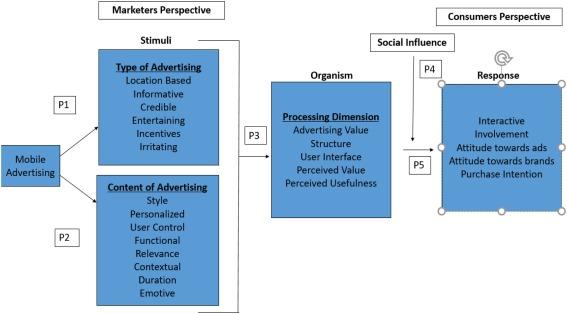10 Global Policies Shaping the Future of Education worldwide
The future of education is being shaped by transformative global policies, each aiming too create more inclusive, effective, and innovative educational systems. As the world rapidly changes—driven by technological advances and shifting social needs—education reforms are crucial for preparing students for opportunities and challenges ahead. In this extensive article, we explore ten influential global education policies, their benefits, and actionable tips for educators and policymakers.
1. UNESCO Sustainable Development Goal 4: Quality Education for All
The United Nations Sustainable Development Goal 4 (SDG 4) has become the cornerstone of global education policies. Its ambitious targets aim to ensure inclusive and equitable quality education and promote lifelong learning opportunities for all by 2030.
- Universal Primary and Secondary Education: Focus on free, equitable, and quality primary and secondary education.
- Early Childhood Development: Expanding access to quality early learning.
- Vocational Training: Ensuring affordable technical and vocational education.
- Literacy and Numeracy: Promoting universal literacy and numeracy.
Impact: SDG 4 guides educational policy frameworks globally, influencing government action, donor funding, and community engagement.
2. digital Transformation in Education
The COVID-19 pandemic accelerated the implementation of policies supporting digital education. Governments worldwide are introducing initiatives to ensure online and blended learning,improving both reach and quality.
Main Features
- Equitable access to digital devices and affordable internet.
- teacher and student training in digital literacy.
- Open Educational Resources (OER) and e-learning content.
Global Examples
- European Union: Digital Education Action plan
- India: National Digital Education Architecture (NDEAR)
3. Policies for Inclusive Education
Inclusive education policies ensure equal learning opportunities for all,regardless of ability,gender,ethnicity,or socioeconomic background.
- Accommodations for students with disabilities.
- Language support for minority learners.
- Anti-bullying and anti-discrimination measures.
Organizations like UNICEF and national governments are advancing these policies to reduce dropout rates and build social cohesion.
4.Teacher Professional development Policies
Quality teaching is fundamental for educational success. Global policies support ongoing teacher training and career support, as seen in Finland and Singapore.
- Continuous Professional Development (CPD) frameworks.
- Mentoring and peer collaboration programs.
- International exchange and best practice sharing.
These approaches help retain talented educators and ensure they adapt to evolving pedagogical methods and technologies.
5. Emphasis on STEM Education
Globally, there is a major policy drive to prioritize STEM (Science, Technology, Engineering, and Math) education. This aligns with labor market demands in knowledge economies.
- Integrated STEM curricula from early grades.
- Public-private partnerships for hands-on learning.
- Incentivizing underrepresented groups in STEM, especially girls and minorities.
Notably, the U.S.and China have implemented large-scale national STEM initiatives, producing positive long-term results.
6. Early Childhood Education Policies
Investment in early childhood education (ECE) is expanding globally, recognizing its impact on lifelong learning and development.
- Universal access to pre-primary programs.
- Teacher credentialing standards.
- Evidence-based curricula, focusing on both cognitive and socio-emotional skills.
Countries like Sweden and New Zealand offer global best practices in ECE policy design and implementation.
7. Technical and Vocational Education Reforms (TVET)
Technical and Vocational Education and Training (TVET) equips learners with job-ready skills, supporting economic growth and employment.
- Industry partnerships and apprenticeships.
- Competency-based learning pathways.
- Focus on emerging sectors: green tech, healthcare, digital economy.
Germany and Switzerland have set global standards for successful vocational education reforms.
8. Climate Education Policies
Climate change is increasingly featured in national curricula. Climate education policies aim to equip students with critical knowledge and skills to address environmental challenges.
- Integration of sustainability literacy in K-12 and higher education.
- Project-based and experiential learning on environmental topics.
- Teacher training on climate science.
Italy was the first country to mandate climate education for all grade levels, setting a precedent for others.
9.Equity & Gender Parity in Education
Achieving gender parity and inclusive equity is critical to global education policy. organizations like UNESCO and The Global Partnership for Education drive action in:
- Eliminating gender gaps in enrollment, retention, and achievement.
- Removing financial and social barriers to girls’ education.
- empowering marginalized groups through targeted scholarships and mentorships.
These initiatives have led to notable progress, especially across sub-Saharan Africa and south Asia.
10. global Citizenship and Intercultural Learning
Global citizenship education fosters the knowledge, values, and skills students need to thrive and collaborate in an interconnected world.
- Promoting tolerance, peace, and respect for diversity.
- Incorporating intercultural competencies and global issues in curricula.
- Exchange programs and collaborations across borders.
The OECD and national initiatives encourage global citizenship as a core educational outcome, preparing students for the challenges of the 21st century.
Benefits of Adopting Global Education Policies
- Future-Ready Learners: Prepares students with relevant, adaptable skills.
- Inclusive Growth: Addresses disparities and promotes social justice.
- Innovation: Fosters creativity, problem-solving, and technological fluency.
- Sustainable Societies: Empowers learners to tackle complex global challenges.
Practical tips for Educators and policymakers
- Stay Informed: Regularly consult global reports and policy updates from UNESCO, OECD, and leading education think tanks.
- Customize Implementation: Adapt international best practices to local needs and cultural contexts.
- Prioritize Equity: Design targeted interventions for underserved groups.
- Foster Collaboration: Promote partnerships among governments, schools, private sector, and communities.
- Embrace Innovation: Experiment with digital tools and teaching methods to enhance engagement and outcomes.
Case Study: Finland’s Holistic Education policy
Finland consistently ranks among the top countries in global education index rankings. The Finnish model, grounded in SDG 4 principles, emphasizes:
- No standardized testing till later years; focus on formative assessment.
- Highly qualified, continuously trained teachers.
- Equity and access for all,regardless of background.
- Holistic curricula, including arts, physical education, and well-being.
Result: High student achievement, low stress, and minimal achievement gaps.

